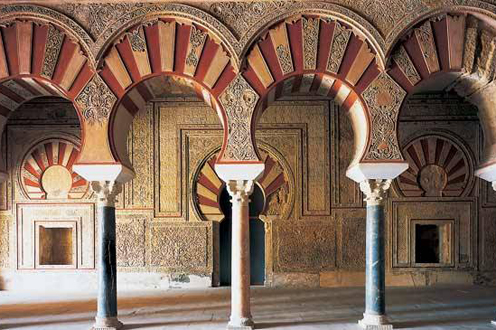Coronavirus COVID-19
Ministry of Culture and Sport warns of potential damage to cultural heritage and hands out guide with recommendations to guarantee their disinfection and protection
News - 2020.4.16
The Ministry of Culture and Sport has handed out a guide with a series of recommendations to guarantee that the measures to disinfect cultural heritage as a result of the COVID-19 crisis are compatible with the protection of cultural assets.
The ministerial department has sent a note to all regional governments inviting reflection on the effects of the pandemic on cultural heritage, the closure of institutions, the disinfection practices applied to cultural assets and future economic repercussions.
Before disinfecting cultural assets, the department also calls for the need to discuss this first with those responsible for the care and guardianship of cultural heritage to determine the vulnerability of each element and the best alternatives to avoid unnecessary damage.
Recommendations from the Spanish Institute for Cultural Heritage
Under this premise, the Ministry of Culture and Sport has sent the regional governments, National Police, Guardia Civil, Emergency Military Unit and Civil Protection some initial 'Recommendations on procedures to disinfect cultural assets as a result of the COVID-19 crisis', drawn up by the Spanish Institute for Cultural Heritage (Spanish acronym: IPCE). The text warns that the use of corrosive products like bleach, ammonia and cleaning detergents is totally contraindicated on monuments, historical buildings, archaeological sites and objects.
"When necessary, and in line with the recommendations from the health authorities, diluted hydro-alcoholic solutions or neutral soaps may be used, always applied with controlled pressure and under the guidance of a technician in the conservation of cultural assets", states the text.
The document adds that in this emergency situation, in addition to the protection of people and society, it is also necessary to consider the important role that cultural heritage represents for society. "In this regard, leading international bodies, such as the ICCROM and the ICOM are reminded of the social and economic importance and identity value of cultural heritage".
Procedure for intervention on cultural goods
Following the closure of all centres due to the state of emergency, the Ministry of Culture and Sport announced that the risk of contamination from cultural assets "is virtually zero" and hence recommends avoiding the use of disinfectant products that may damage materials.
As regards closed spaces that contain cultural assets such as museums, archives and religious sites, it is not advisable to fumigate or use general sprays, since following their closure to the public a month ago, the existence of the virus in the atmosphere of these places is highly unlikely.
It is recommended that such surfaces as floors, doors and handles, which lack any historical or artistic value should be cleaned using common disinfectant solutions proposed by the health authorities, although it is preferable to use a 70% solution of ethanol dissolved in water.
The cleaning procedures also include exterior glass surfaces that may have been touched by visitors, although it is not advisable to take any special measure for interior glass surfaces, since there has been scant access, limited to specialised personnel who work at the institution.
Once disinfection and cleaning have been completed, the document recommends ventilating the spaces cleaned to avoid the accumulation of volatile organic compounds (VOCs) stemming from the evaporation of disinfectant solutions.
Procedure for intervention on cultural buildings
Should there be any doubts as to cleaning and disinfection processes, the Ministry of Culture and Sport advises authorities not to apply any treatment, since this may cause irreparable damage to the cultural heritage, and urges all measures to be agreed with professionals in the fields of conservation/restoration.
In the case of cultural assets located in public spaces (old towns, public squares, parks and streets), the document requests that objects and buildings with an historical/artistic value are not directly sprayed.
In the area immediately around the cultural assets (within a distance of 1 metre, such as nearby pavements and bases of buildings), it is preferable to use a 70% solution of ethanol dissolved in water applied at a low pressure. This disinfectant solution is effective against the virus and spraying is less harmful than applying sodium hypochlorite (bleach) on such materials as stone, brick, wood and metal.
Disinfectant treatments should also be avoided close to polychrome cultural assets such as church facades and altarpieces, and the alternative is proposed of fencing off the perimeter to avoid people getting close up and in direct contact.
Non official translation





